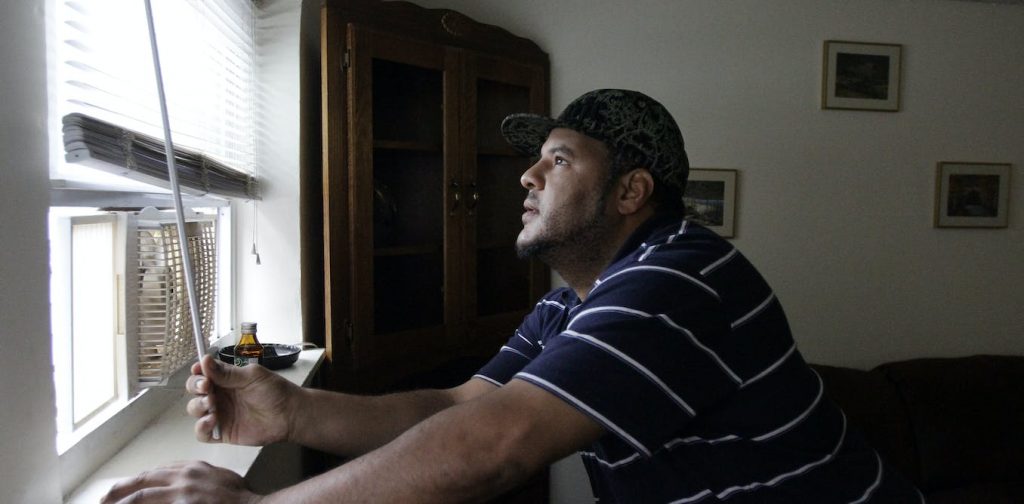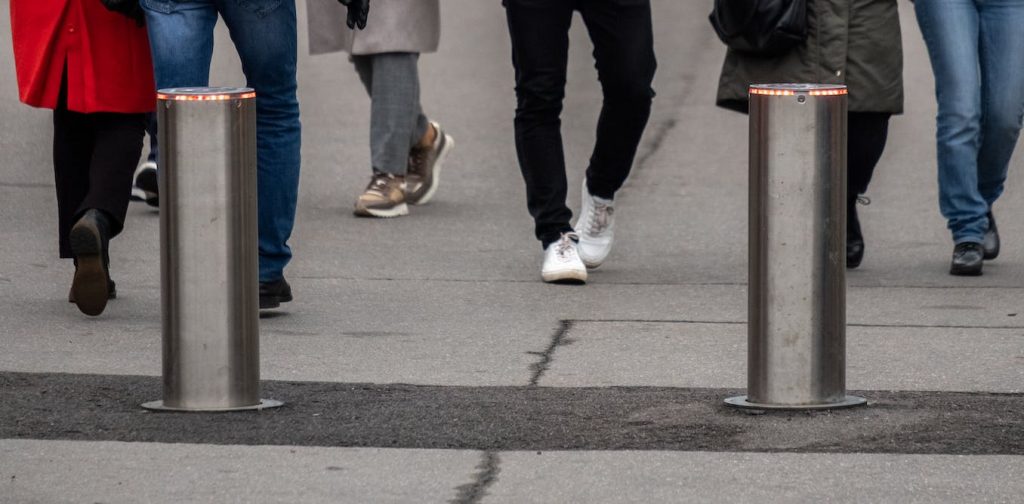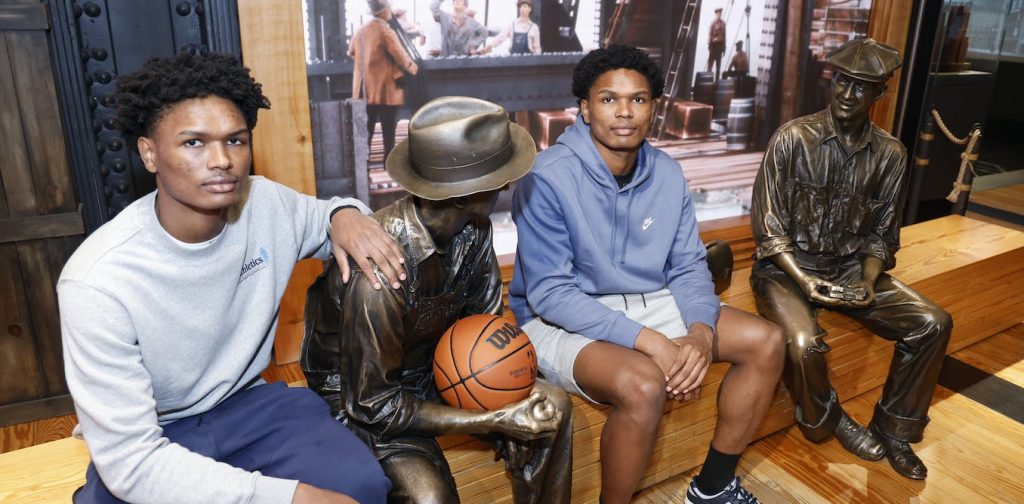Urban planning is often overlooked as a career — here are some ways to change that

When students at Hughes STEM High School in Cincinnati were asked back in 2016 what part of their school they’d like to improve, they identified Coy Field – an athletic field they use for baseball, softball, track and football.
Students said they felt uncomfortable and unsafe using the field because of its unkempt conditions. The field was covered in trash. Some sections were muddy. Students also had to walk the 10 minutes it takes to get to the field along narrow streets.
We are urban planning scholars with interest in land use planning, ecological planning and design and urban green space planning. When we invited Hughes students in 2016 to identify a part of their campus that needed an upgrade, we actually had a higher purpose in mind: We wanted to introduce the students to urban planning as a profession.
Lack of awareness
It’s a profession that pays quite well and is expected to grow significantly in the coming years. The median income for urban planners in the U.S. is US$78,500. Employment in the field is projected to grow by 4% between 2021 and 2031 from 41,900 jobs in 2021.
We wanted young people to know that urban planning is also a profession that will enable them to literally change the world around them.
Despite the rewards of being an urban planner – and despite the fact that more than 50% of the world’s population lives in cities – both scholars and practitioners agree that few young people know about this profession. It also suffers from a profound lack of diversity. For instance, in the U.S., of the 40,000 or so members of the American Planning Association, only 13% are nonwhite, compared with 24.5% of the U.S. population. There are also about twice as many male urban planners as there are females in the profession.
We’ve found that these things are true around the world.
For instance, in Canada, 18.8% of the more than 8,000 members of the Canadian Institute of Planners are nonwhite, compared with 22.3% for the population. In the United Kingdom, just 6.24% of the more than 27,000 members of U.K.‘s Royal Town Planning Institute are “Black, Asian or from minority ethnic groups,” compared with 18% of the population.
The reality of the lack of awareness of urban planning as a profession hit home for us in 2016. That’s when we noticed a precipitous drop in enrollment in the urban planning bachelor’s degree program at the University of Cincinnati, where two of us currently work. Between 2012 and 2016 there was a 23% decline in high school students enrolling in the program.
In an effort to understand why this was happening, we met with educators and counselors in the Cincinnati Public Schools. We soon discovered that the educators and counselors were generally unfamiliar with the urban planning profession. They also admitted that they weren’t recommending urban planning as a career path. In March 2016, School of Planning faculty members and students launched the Activate Community Empowerment initiative in an effort to turn things around.
 The urban planning field suffers from a lack of racial diversity. Resolution Productions/Tetra images via Getty Images
The urban planning field suffers from a lack of racial diversity. Resolution Productions/Tetra images via Getty Images
The process of planning
The Activate Community Empowerment initiative – or ACE – was a three-week outreach program to help high school students, counselors and teachers become aware of the urban planning profession. Through the initiative, we held five meetings with 44 juniors from two classes at Hughes STEM High School.
After students told us they wanted to improve the conditions of their playing field, School of Planning faculty members and students helped the Hughes students tackle the problem as if they were urban planners.
The first thing we did was print 11-by-17-inch sheets of paper that featured maps of Coy Field and the surrounding area, along with a series of questions. Students were asked to mark the maps to identify different issues they experienced while walking to and using Coy Field.
Then we printed a second, larger map – this one was 36 by 44 inches – and had students transfer their notes onto the map along with additional ideas for discussion. One group of students focused on the paths to Coy Field, and a second group focused on Coy Field itself.
On the final day, both groups used PowerPoint to present their ideas on ways to improve the paths to the field and the conditions of the field. One of the students’ suggestions was the regular cleaning of the Coy Field.
A Hughes teacher told us later that trash and graffiti had been removed from the field as a result of the initiative. From the teacher:
“I know that a majority of the students really learned a lot and were inspired. [We]… will use some of your ideas and strategies next year with our students.”
 Cities around the world are exploring ways to get children and young people interested in urban planning. Capuski/E+ via Getty Images
Cities around the world are exploring ways to get children and young people interested in urban planning. Capuski/E+ via Getty Images
A global look
As a result of our work at Hughes, in 2023 we published a new book about urban planning around the world. The book is meant to draw attention to the need to make urban planning more attractive to children and young people as they explore different careers.
We believe there are a series of steps that education leaders can take to raise awareness about urban planning among young people in the U.S. and throughout the world. Here are just three:
1. Partner with schools to provide real-world experiences
To raise awareness of urban planning among students before college, universities in general – and urban planning programs in particular – can promote youth engagement by forming partnerships with local schools.
For instance, at the University of California, Berkeley, the Youth-Plan, Learn, Act, Now program – or Y-PLAN – enables the university’s urban planning students who work with students from low-income families to tackle various problems in the community such as climate change via green infrastructure planning, improving pedestrian safety and promoting environmental justice.
There are also examples in other countries. For instance, in Kaizuka, a city in Japan, the Urban Planning and Design Lab of Osaka University teamed up with local government and a real estate company to work with students from the Kaizuka West Elementary School Machizukuri Club. The word “machizukuri” can be loosely translated as “community building.” Among other things, these entities worked with the club to provide public seating, tables, and recreation spaces for fishing and sand spots in their community.
2. Make urban planning part of the high school curriculum
In New South Wales, Australia, inclusion of urban and regional planning in the high school geography curriculum increased students’ awareness about the profession.
3. Support prospective and existing urban planning students
Urban planning programs can do more to support future and current students through recruitment programs, mentorships and community engagement. They can also do more to offer professional networking and social media presence and demystify any misconceptions about job prospects and expectations.
As cities become more complex and face various challenges, urban planners will play a key role in finding solutions. The more that can be done to attract children and young people from diverse backgrounds to the profession, the better able future urban planners will be to tackle those problems.





